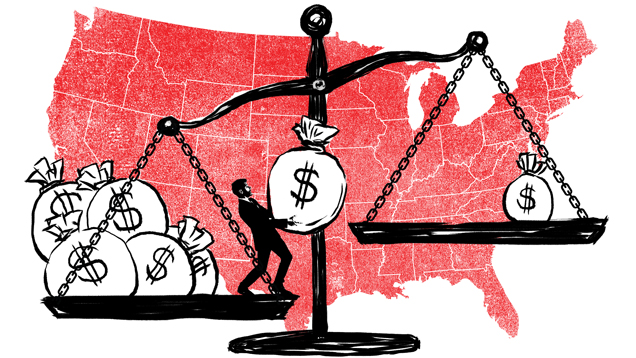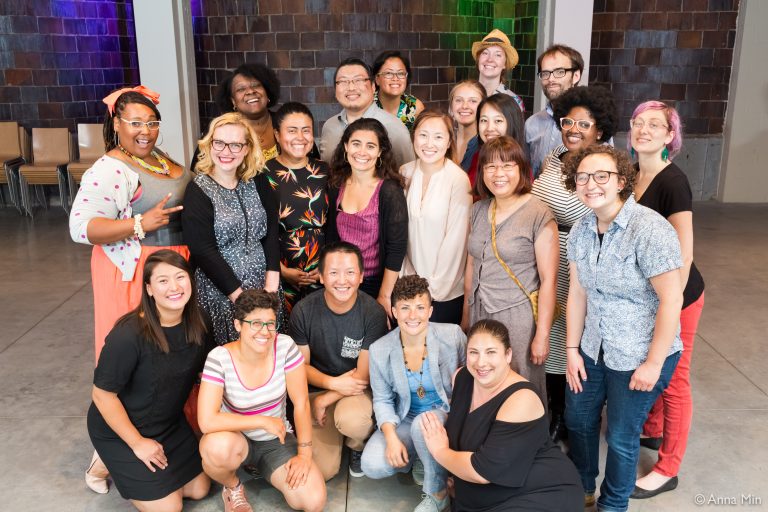Part II: Reparations are real
This post is a part II of a three part blog series and RG campaign, “It Starts Today: Moving $1 Million to Black-Led, Black Liberation Organizing.” Click here for more info on the campaign.
Written by Lily Andrews, bex kolins, Jason Rodney, and Jen Willsea
(Soundtrack for this post: “There’s Something Wrong With This Picture” by Galactic)
In the Resource Generation community we are going to move $1 million to Black-led organizing for Black liberation by May 20th, 2015. For many of us, this is an act of reparations.
What are reparations?

The National Coalition of Blacks for Reparations in America (N’COBRA) explains that reparations require governments and corporations to apologize and provide material amends for the history of slavery and white supremacy. Beyond this, N’COBRA points out that “all white people have to some extent benefited from slavery and… White Supremacy” and individuals who understand how they have benefited “if acting in good faith, would [also] contribute to reparations funds for use in assisting in the reparations process¹.”
As white wealthy individuals, reparations means redistributing our excess personal money to under-resourced Black communities, as a way to acknowledge and attempt to repair the wealth, land, and knowledge that has been stolen from Black people overall, but that has benefitted us personally². The wealth accumulated in this country, through theft of Black labor, property and dignity, has primarily benefited white communities:
The white owning-class produced immense wealth through chattel slavery;
In the 1940s and 50s, Social Security and the G.I. Bill built white wealth through privileging white beneficiaries and excluding Black people and people of color³;
And, less than a decade ago, Wells Fargo, among other banks, targeted Black communities across the class spectrum for subprime mortgages, essentially writing Black foreclosures into their business-plan4.
This stolen wealth is not abstractly dispersed in history’s ledger books. It is actively sustaining and providing a safety net for white communities today. Please see the graph, below.
MEDIAN HOUSEHOLD NET WORTH: 2010 (CNN, from Census Bureau Data)
Source: http://money.cnn.com/2012/06/21/news/economy/wealth-gap-race/; accessed 2/27/15 Note: This graph makes invisible American Indians and Alaska Natives (“not shown because of their small sample size” according to the Census Bureau) and Middle Eastern / Arab folks (forced to choose another racial label). For a different reference point (that misleadingly doesn’t account for assets and debt), here are Median Household Incomes from 2013; Asian: $67,065; White (non-Hispanic): $58,270; White: 55,257; Hispanic: $40,963; American Indian and Alaska Native: $36,252; Black: $34,598. Also, Asian communities get represented as well off, when we know that several south and southeast Asian ethnic groups – such as the Hmong – live in poverty, and are invisibilized by the representation of “overall” success.
The safety net provided by having wealth (savings; a home; stocks; family money; or some other asset) – is the distinguishing factor between how families or individuals that have access to this wealth, and those who don’t, are able to weather a financial crisis; a major illness; or any other unexpected disaster.
Illustrating the safety net (by Jason Rodney) I am a white boy from the Midwest. My money story is one example of the safety net that white supremacy gives to white folks. My dad’s parents lost most of their money when a family business went under. My mom’s family also had various crises that left her without money at the end of high school. They both had to finance their own college education and took on a lot of debt to buy a house. However, I inherited a significant safety net. My great-grandfather gave me and my cousins money. It paid for my first year’s college tuition – around $40,000. I went to Macalester, a school that is 76% white and for the last margin of their admission decisions, gives preference to wealthy people. Great grandpa was a California cattle rancher, as were his ancestors for generations. They got wealth and access over the course of centuries of white supremacy – they were Spanish colonizers taking land from indigenous people. And this Spanish conquest was fueled by indigenous and African slave labor. My mom’s side shows the white safety net too. Mom’s mom can trace her ancestors to British colonizers in the 1600s. They made their livelihood in cities built by slave labor and off the taxes of slave trade5. Over the centuries my family had their financial ups and downs, but with access to white-only college institutions and white-only land trades the downs weren’t devastating. My nana grew up in the Great Depression, but her parents owned their house, and her grandparents left her money for college tuition. This was no accident. White supremacy and our class system are deeply tied. I started getting activated when I noticed this pattern in my own life. My high school was 70% Black, but my Advanced Placement classes were 95% white. I got suspicious that white supremacy might still be alive. I have since found some of my greatest inspiration in the Black liberation movement. With a highly energized movement in this current moment, I am so excited to step deeper into the work of liberation today. I don’t have money beyond my income, but I am giving from that and using my networks to fundraise and activate my loved ones.
Why RG, Why Now
Think about how this wealth gap plays out in your own life. White households have a median net financial worth of $110,729 – “worth” that has accumulated across generations, through home ownership; access to loans and public programs; land theft; slavery; and more.
Black and Brown households are estimated at owning less than $7,500 in assets. In this context, redistribution and reparations are core frameworks that must shape our work as we young people with class privilege contribute to the movement to dismantle white supremacy.
Centering Black liberation Check out this explanation of why specifically naming and supporting Black liberation is vital.
It is time for us show up in the ways we can and take ownership of this reality, in ways that make sense for our identities. We ask our readers who are people of color to consider what role – if any – are you called to in this work of reparations to Black communities? And to our white readers we make a specific appeal: it is our particular responsibility to show up and make reparations. Right now.
Join us. Take action.
¹http://ncobra.org/aboutus/index.html
² The idea of real reparations to Black folks has come to be seen as unlikely in the mainstream white U.S. Dr. William A. Darity explains why in this video. But it was common practice in the days of chattel slavery, and contemporary scholars, legislators and organizers alike are working to ensure that this becomes a politically viable reality soon. (Coates)
³“Old-age insurance and Social Security initially excluded most African Americans,” by excluding the jobs they occupied. Bobo: The G.I. Bill, which spurred the creation of suburban housing wealth by backing zero-down payment loans for veterans, left most Black people without financing, by turning them over to racist banks and Veterans Affairs officials. A similar pattern financed white veterans college education, while “only one fifth of the 100,000 blacks who had applied for educational benefits had been registered in college by 1946” thanks to an apartheid education system. Wikipedia: http://en.wikipedia.org/wiki/African_Americans_and_the_G.I._Bill
4Department of Justice: http://www.justice.gov/opa/pr/justice-department-reaches-settlement-wells-fargo-resulting-more-175-million-relief. This mirrors a pattern throughout the 20th Century, where lenders and government agencies alike forced housing values to drop when Black folks moved in. This is like spending $100,000 on a stock, then being told it’s suddenly worth $10,000 because you’re Black. Or worse – paying most of your mortgage and then being evicted with no equity for one missed payment.
5Boston and Newport were chief slave ports. Most of New England had its peak slave-ownership just as the Revolution kicked off. http://slavenorth.com/profits.htm

